Yellow-legged Gull
Scientific Name: Larus michahellisMaltese Name: Gawwija Prima
Family: Gulls (Laridae)
Occurence: Common Winter visitor and common breeding resident
Breeds in Malta: Yes
Breeding Frequency: Frequent & Localised
Overview:
The Yellow-legged Gull is a large gull with yellow legs a grey back, white-headed in autumn, and have black wing tips with few white spots. They have a red spot on the bill as adults and a red ring around the eye. These are omnivores like most Larus gulls, and they will scavenge on rubbish tips and elsewhere , as well as seeking suitable small prey in fields or on the coast, or robbing other birds of their catches.Yellow-legged Gulls usually breed in colonies. Eggs, usually 3, are laid from mid March to early May and are defended vigorously by this large gull. The nest is a sometimes sparse mound of vegetation built on the ground or on cliff ledges. The eggs are incubated for 27–31 days and the young birds fledge after 35–40 days.
Status and Distribution:
The Yellow-legged Gull is the largest breeding bird of Malta. It breeds in small colonies in cliffs in Malta and Gozo, while a large colony breeds on the island of Filfla (up to 200 pars). Although it is resident in large numbers, a much higher number of Yellow-legged Gulls is present in Winter.
When to See:
All year round
Where to See:
Seen mainly at sea from the coast. They enter harbours in large flocks when its windy. They are also commonly seen crossing the mainland in the evening.
Photographs:
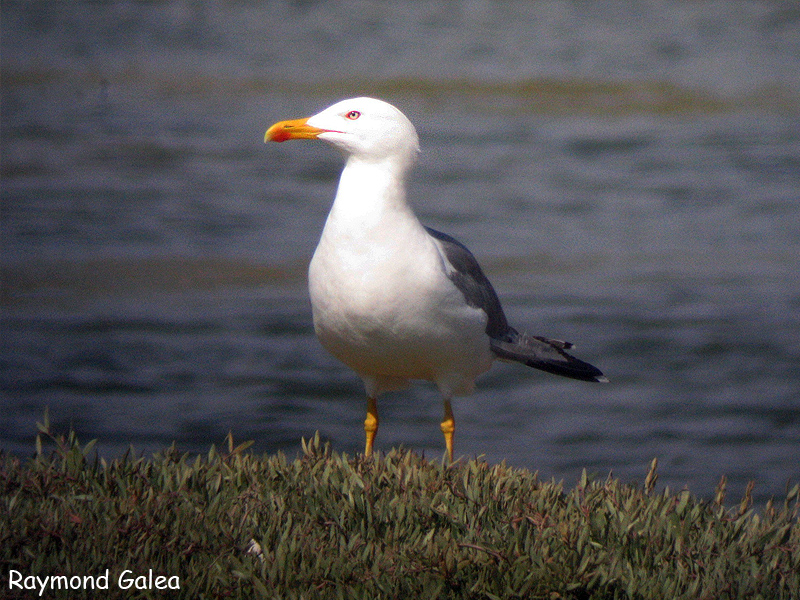 |
Adult Yellow-legged Gull, Ghadira Nature Reserve |
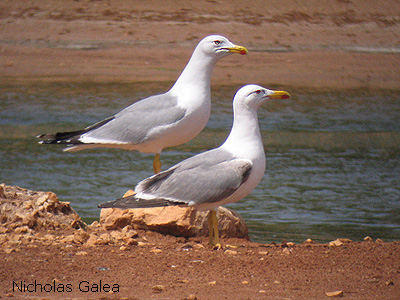 |
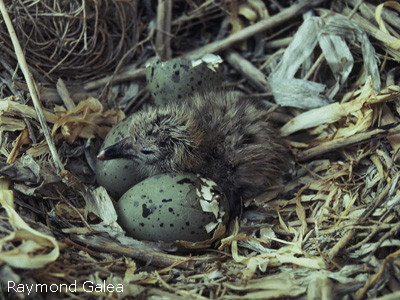 |
| Pair of Yellow-legged Gull, Ghadira Nature Reserve | Chick of Yellow-legged Gull, Filfla Island |
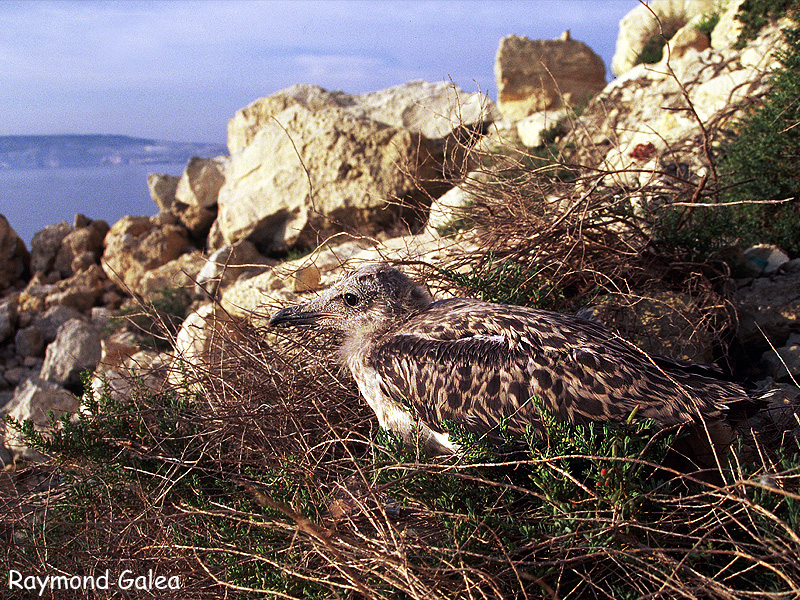 |
Young Yellow-Legged Gull at Nest, Filfla Island |
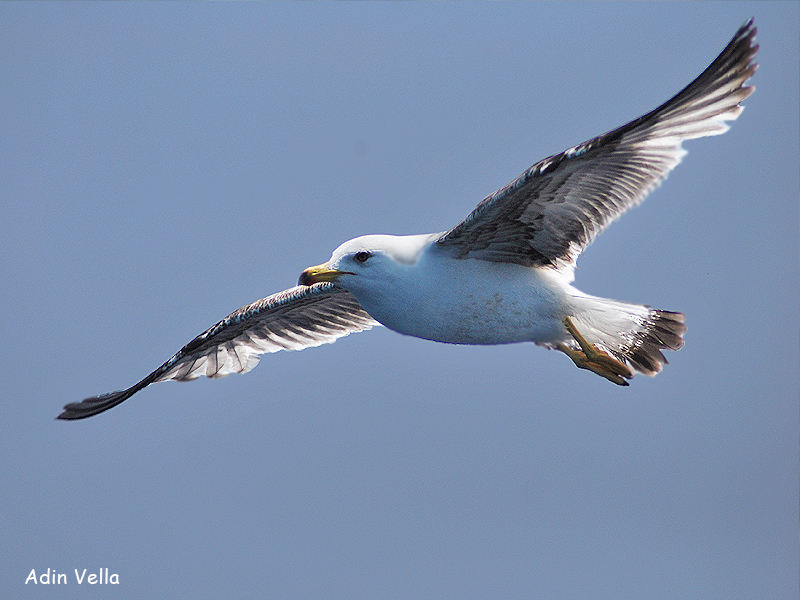 |
3rd Year Yellow-Legged Gull in Flight, off Gozo |
Back to Bird Species List